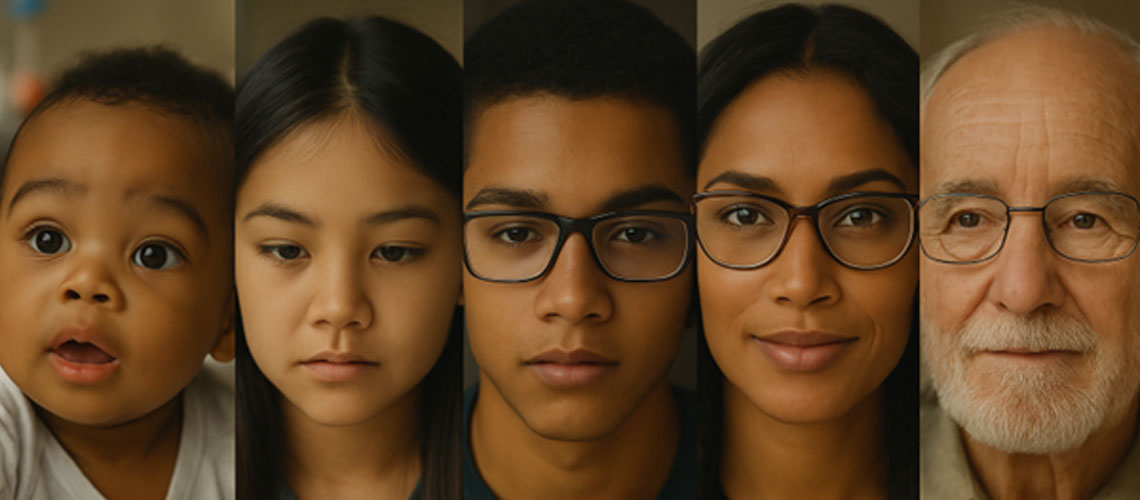
From the moment we open our eyes as newborns to the challenges of age-related visual decline in later years, the journey of eyesight is a remarkable testament to the complex sense of sight. Vision evolves and changes throughout our lives, adapting to the needs and challenges of each life stage and shaping how we perceive the world around us. Understanding how our eyesight changes over time can help us protect and optimise it, ensuring clear vision and eye health at every age. INFANCY Newborns enter the world with limited vision. They are able to focus on objects only about 20 to 30 centimetres away, just enough to see their caregiver’s face during feeding and bonding. In the first few weeks the baby appears to be cross-eyed as the eyes learn to work together. Over the first few months of life, the visual system develops rapidly. By 6 months of age most babies have achieved visual acuity, eye coordination, depth perception and the ability to track moving objects, skills that are crucial for the development of hand-eye coordination. Newborn babies are unable to perceive colour, and it takes a few months for colour vision to develop. Infancy and early childhood are critical periods for eye health. If not detected and treated early, eye problems at this stage can lead to developmental problems. An eye examination at six months of age involves observing how the eyes react to light, work together and are able to follow a moving object, ensuring...
26 Hits
26 Hits










